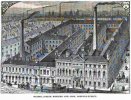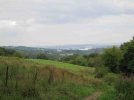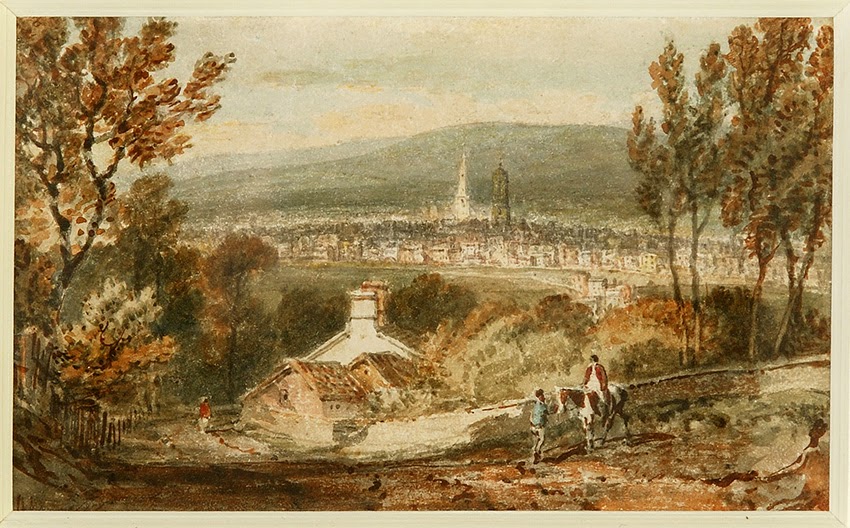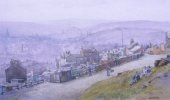-
The BladeForums.com 2024 Traditional Knife is ready to order! See this thread for details: https://www.bladeforums.com/threads/bladeforums-2024-traditional-knife.2003187/
Price is $300 ea (shipped within CONUS). If you live outside the US, I will contact you after your order for extra shipping charges.
Order here: https://www.bladeforums.com/help/2024-traditional/ - Order as many as you like, we have plenty.
You are using an out of date browser. It may not display this or other websites correctly.
You should upgrade or use an alternative browser.
You should upgrade or use an alternative browser.
The Dairy-Maids of Porter Brook (Part 1)
- Thread starter Jack Black
- Start date
- Joined
- Dec 2, 2005
- Messages
- 69,101
Thanks for bringing this thread up again Jack, just read the first posts, thanks for the nice story. Will watch the video's sometime later when at home
Thanks Mark, hope you find the videos of interest
 I used to post a lot of these sorts of threads, but find the BF software now makes it difficult
I used to post a lot of these sorts of threads, but find the BF software now makes it difficult - Joined
- Mar 28, 2015
- Messages
- 726
Haven't read this yet Jack but am looking forward to it. I went to Arundel Castle last week (Sussex home to the Duke and Duchess of Norfolk) saw this painting and immediately thought of you. It shows industrial Sheffield in the 1880s viewed from the surrounding countryside. Hope it's of interest. 
 Untitled by Blake Blade, on Flickr
Untitled by Blake Blade, on Flickr

 Untitled by Blake Blade, on Flickr
Untitled by Blake Blade, on Flickr- Joined
- Dec 2, 2005
- Messages
- 69,101
Haven't read this yet Jack but am looking forward to it. I went to Arundel Castle last week (Sussex home to the Duke and Duchess of Norfolk) saw this painting and immediately thought of you. It shows industrial Sheffield in the 1880s viewed from the surrounding countryside. Hope it's of interest.
Untitled by Blake Blade, on Flickr
I'm sorry you have to read it in the software-garbled form my friend, unfortunately there is no way to edit it

- Joined
- Mar 28, 2015
- Messages
- 726
Yeah its a nice if, no doubt, slightly idealised view of Sheffield. That said it tell a story of the hard working folk of Sheffield, in the city as in the countryside. Nice to know some of that countryside still exists. ☺
- Joined
- Dec 2, 2005
- Messages
- 69,101
Yeah its a nice if, no doubt, slightly idealised view of Sheffield. That said it tell a story of the hard working folk of Sheffield, in the city as in the countryside. Nice to know some of that countryside still exists. ☺
The wind was probably blowing to the east that day or they'd be all caked in soot!

- Joined
- Mar 28, 2015
- Messages
- 726
Of course! I have a small knife which reads Norfolk St on the tang..No. 6 I believe.
- Joined
- Dec 2, 2005
- Messages
- 69,101
Of course! I have a small knife which reads Norfolk St on the tang..No. 6 I believe.
No 6 indeed
 Here is their Norfolk Works
Here is their Norfolk Works 
The photo below is taken on my walk along the Porter Brook, looking towards the city centre, and only 3 miles or so from Sheffield Town Hall. The photo is taken not far from the hamlet of Mayfield, which has always been, in every way a country area. But then, when I was a kid, there was a farm just up the road from us, and that was only about a mile and a half from the city centre


- Joined
- Dec 2, 2005
- Messages
- 69,101
- Joined
- Mar 28, 2015
- Messages
- 726
That's great and very similar to the painting. The Rogers company was obviously far from a small cottage enterprise as you might imagine wasn't it. Look forward to reading your piece and finding out more. Thanks a lot Jack. 


- Joined
- Dec 2, 2005
- Messages
- 69,101
That's great and very similar to the painting. The Rogers company was obviously far from a small cottage enterprise as you might imagine wasn't it. Look forward to reading your piece and finding out more. Thanks a lot Jack.
I have a number of other paintings on postcards showing similar scenes, but am currently without a scanner

Rodgers had two other factories of a similar size, and a forge outside town. Hope you enjoy reading about the River Porter my friend

- Joined
- Mar 28, 2015
- Messages
- 726
A fascinating history Jack. The early industrial history of the area eloquently traced alongside the river that supplied its power. Your own experiences add an extra special dimension and reality to the story. I especially enjoyed the recounting of your early days at Shepherd's wheel and your pictures of what remains there. This has really brought to life the painting I saw at Arundel Castle last week and the connection between Sheffield's industrial heart and its surrounding countryside in ways a Southerner and complete stranger to the place could not have imagined, and has fuelled my interest in traditional Sheffield knifes and the honourable craftsmen who made them. How lucky we are to be left the fine results of their labour. Good job Sir! 




Last edited:
- Joined
- Dec 2, 2005
- Messages
- 69,101
A fascinating history Jack. The early industrial history of the area eloquently traced alongside the river that supplied its power. Your own experiences add an extra special dimension and reality to the story. I especially enjoyed the recounting of your early days at Shepherd's wheel and your pictures of what remains there. This has really brought to life the painting I saw at Arundel Castle last week and the connection between Sheffield's industrial heart and its surrounding countryside in ways a Southerner and complete stranger to the place could not have imagined, and has fuelled my interest in traditional Sheffield knifes and the honourable craftsmen who made them. How lucky we are to be left the fine results of their labour. Good job Sir!

Thank you my friend, I'm glad you enjoyed reading it
Fodderwing
Gold Member
- Joined
- Jan 31, 2017
- Messages
- 9,090
Benjamin Wildgoose now resides in my memory and will float thru some future reveries. Jack this thread is such a gift. Thank you sir. Please know that your efforts are deeply appreciated and applauded. Such rich history, pastoral settings, anecdotal sidebars. It’s all here. Looking forward to sequels!
Elgatodeacero
Gold Member
- Joined
- Jan 5, 2014
- Messages
- 3,027
What a great post and amazing photos. Really enjoyed the history.
It was also fun to read the 1895 beer license proceedings, which seemed as modern as today.
It was also fun to read the 1895 beer license proceedings, which seemed as modern as today.
- Joined
- Dec 2, 2005
- Messages
- 69,101
Benjamin Wildgoose now resides in my memory and will float thru some future reveries. Jack this thread is such a gift. Thank you sir. Please know that your efforts are deeply appreciated and applauded. Such rich history, pastoral settings, anecdotal sidebars. It’s all here. Looking forward to sequels!
What a great post and amazing photos. Really enjoyed the history.
It was also fun to read the 1895 beer license proceedings, which seemed as modern as today.
Many thanks for the kind words guys, very much appreciated

- Joined
- May 30, 2021
- Messages
- 2
So interesting. Thank you for pointing me to this thread. My great-great grandfather was a fork grinder in Sheffield in the mid 1800's. His name was Thomas Whiteley, and I've wondered if there's a family connection to Whiteley Woods. I'm happy to get a better picture of what the cutlery business was like when my ancestor lived there. My Whiteley ancestors apparently lived and worked in Sheffield from the late 1600s and were listed in records as button makers, scissorsmiths, silversmiths, grinders, etc.
- Joined
- Dec 2, 2005
- Messages
- 69,101
I'm glad you found it interestingSo interesting. Thank you for pointing me to this thread. My great-great grandfather was a fork grinder in Sheffield in the mid 1800's. His name was Thomas Whiteley, and I've wondered if there's a family connection to Whiteley Woods. I'm happy to get a better picture of what the cutlery business was like when my ancestor lived there. My Whiteley ancestors apparently lived and worked in Sheffield from the late 1600s and were listed in records as button makers, scissorsmiths, silversmiths, grinders, etc.

By 1879, we have Joseph Whiteley, watchmaker and jeweller; John Charles Whiteley, enginner (and secretary of the Sheffield branch of the Amalgamated Society of Engineers); William Whiteley, flour and corn dealer; Henry Whiteley, shopkeeper; William Whiteley, hosier; James Whiteley, cutlery caster; Taylor Thomas Whitely, salt and pot mould dealer; John Whiteley, grinder; George Whiteley, grocer; Thomas D Whiteley, greengrocer; William Whiteley, scissors, pen and pocket-knife manufacturer; Charles Whiteley, shear grinder; Mrs Hannah Whiteley, seamstress; and George Whiteley, cart-owner and grocer. There are also a few teachers.
William Whiteley's advert in the 1919 Sheffield Trade Directory:

The firm is still trading. From their website:
"Whiteley’s was founded in 1760 and is now the last industrial scissor-maker in the UK, and the oldest scissorsmiths in the western world. Whiteley’s is a leading producer of industrial and professional scissors and shears, developing cutting solutions to match the latest materials in automotive, aerospace and many other industries. Each scissor produced by the company is still hand-made, assembled and tested by craftsmen, using the skill and techniques honed and handed down over centuries."
According to Geoff Tweedale's Directory of Sheffield Cutlery Manufacturers, the company traces its origins back to 1776, when William Whiteley was granted his freedom, but he was himself the son of a scissor smith, James Whiteley. William died in 1847, and the business was taken over by his widow, Elizabeth, who ran it until about 1862, employing 20 hands in 1851. During this period, the company's products were stamped 'E. Whiteley'. She died in 1868. Under her son, William, the business was again named William Whiteley, and listed at Phoenix Works, Rockingham Street. At the turn of the 20th century, the firm was headed by the next William Whiteley (1857-1945). After William passed away, the next William took over, but died in 1950. It is still in family hands today.
Last edited:
screened porch
Basic Member
- Joined
- Feb 19, 2012
- Messages
- 18,359
Do they still make knives?After William passed away, the next William took over, but died in 1950. It is still in family hands today.
Looks like it's all scissors and shears, except for the free mini-Whiteley pocket knife you get with a 75q purchase.

